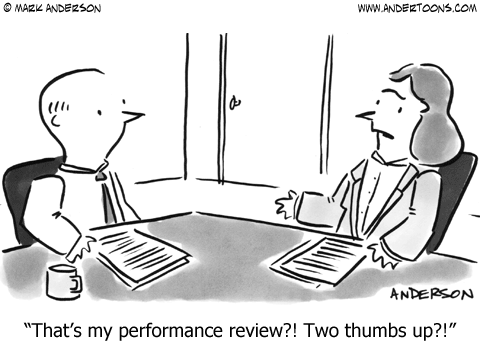More and more organisations are putting the annual review to rest and are opting for continuous feedback. For those of us who enjoy video and computer games, this makes total sense. Imagine playing a game without knowing how you are doing, not knowing what level you have achieved, not knowing whether you are winning or losing, etc. Even those of us who enjoy competitive sports, we wouldn’t imagine any game not calculating some kind of score, league table or tournament winners.
In the world of work for some reason, which always baffled me, we have this amazing belief that feedback once or twice per year is going to give us a good idea on how we are doing. It is hard to stay motivated on long-term goals alone. Most of us need to break down a long term goal into bite size realistic chunks that are real to the person carrying out the work.

I worked on a retail change project, where the company management team was open about the fact that they were making a major loss and that they had to ask everyone in the company to help them turn the business around. Most employees in fact were on board, they just individually did not know how they could help with their individual contribution. So as part of the change program we looked at how many items by clothing section each salesperson had to sell in order to perform well on the day. Team managers were tasked with breaking this down across collections, training was given to assist sales teams in upsetting and cross selling, dressing room and personal shopping services were increased because of ideas from floor staff. Although the company did have a tough few years and had to close down some stores, they are still on the market and performing well, thanks to a pivot.
Do you know how your personal contribution is adding value to your company? I hazard a guess that the majority of people wouldn’t be able to state how they add value. And yet, you probably have been part of the annual review process at least a few times…
With technology advancement improving all the time, the appearance of trackers of all kinds allows us to have more and more real-time feedback on our performance. When done well company leaders set a vision and develop a strategy. These in turn are then translated into objectives and key performance areas by company, division, team and individual. Each task performed should then belong to one of the objectives and key performance areas, which is then tracked as and when actions are carried out, completed and recorded.
Add in a layer of gamification into the tracking process and we can even make your regular task completion a bit more fun. Whether you are betting on your performance before you start and try to beat your own best guess or whether you have a traffic light feedback system with indicators of what is on track and what needs input or you may slay monsters as a team to show your progress, all these tracking methods which play out on a daily and weekly basis are more effective than the annual review once or twice a year.
Performance management conversations then also become more regular feedback sessions and debriefs after projects, which allow for you to adjust your performance a lot more quickly. I would even say feedback on something done well or badly in the moment gives you something to work with, a month or 6 later it becomes meaningless and even petty.
What are you using to track and enable your employees best performance?



